I recently built a circuit using a 2N3904 BJT transistor with the hopes that when connected to a headphone jack, it would light a LED whenever an audio signal was passed through. However, I found that this only worked when I put my devices to full volume (or at least > 80%). Trying a Darlington transistor setup didn't help. I need this LED to activate at much lower volumes (this is for a research project in which I need a visual indication that a sound is playing, often at 50% volume). My proposed solution:
Add a 1.5V battery and resistor to the Audio line in before the transistor base so the battery will amplify the baseline voltage enough that it will trigger at lower volumes. Then I could just use the appropriate resistor to adjust the voltage amplification of the signal for different sounds I'm using.
Before I try this, I thought I'd post on here and get some second opinions. My two questions are:
-Will this work to amplify the voltage of the audio signal as I'm intending?
-If so, will I run into any risk of damaging any headphone jacks which are plugged into this?
On the image, the ground and empty negative terminal of the battery at the top are connected to the ground and Left audio channel of the headphone cable, respectively. Any advice is greatly appreciated!

This is similar to the question posted here: How can I effectively reduce the voltage needed to activate a transistor? But since I'm a beginner, I'm looking for easier ways to amplify the signal. This "just has to work" without being fancy.
